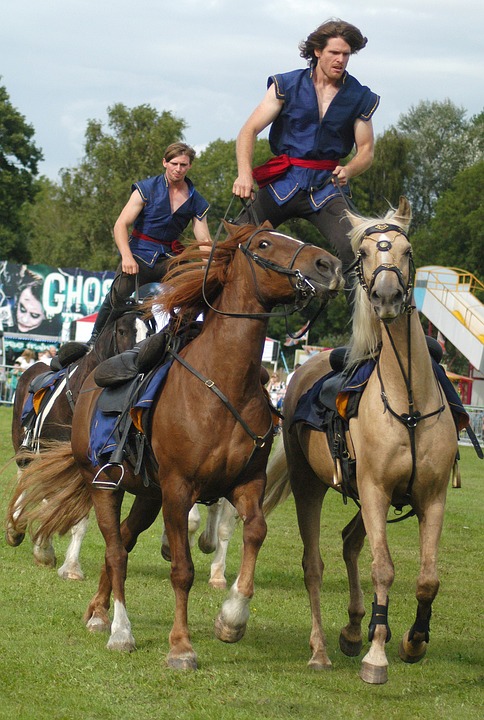We all know there are distinct differences on the trail (the equipment used to ride, like saddles and bridles,) but when we learned to ride, we weren’t taught why the trail is different, and how different the two types of riding really are. I’ve always been fascinated by beautiful western horses in fancy hoods and breastplates and jockeys with their chaps and cowboy hats marching in parades, but other than that, I didn’t see many Western-style riders growing up, except on TV. Through my research, I’ve found that learning to ride English is harder at first, and it’s easier to switch from English to Western than the other way around. I won’t focus too much on English riding today, I’ll pretty much explain the basics of western riding. I will delve more into English riding in a future article.
I think the first place to start is the beginning…the beginning. Western riding can first be traced back to around 400 BC when it was widely accepted that Xenophon, a Greek soldier and historian, founded modern horsemanship. Although any breed of horse can be used for western riding, the most popular breeds are quarter horses, painters, and appaloosas.
Western riding evolved primarily on the ranches of the American West. A Western rider uses his non-dominant hand to handle the reins, and uses neck reining to control the horse. When neck reining, you are gently pushing the horse in the direction you want your horse to go rather than pulling in the same direction. For example, if you want your horse to move to the right, you have to touch the left rein to your horse’s neck. Western trained horses are trained to listen to your commands without a lot of oral contact. You might be wondering why you would use your non-dominant hand to hold the reins – the reason for using your non-dominant hand is so that the rider can use his dominant hand to pull cattle, etc. For the Rowing Cattle, there are many other events you can find fun with western riding! They include barrel racing, pleasure riding, ropes, gymkhana, and endurance riding.
Western saddles are heavier, and have a horn in the front to aid in the herding of cattle. Also, the saddle is larger and deeper and can be more comfortable for a horse that has to spend long periods of time actively working. It is also comfortable for the rider, distributing weight more evenly across the horse’s back. The bottom stirrup should hit the rider’s ankle bone for a proper fit.
The rider should be relaxed but sitting upright with good posture, moving with the horse. Subtle cues with the hips and seat give directional cues to your horse. Your horse will depend on you to transfer your weight correctly and carry your body properly to interpret your commands.
It is not unusual in western riding for a rider to use noise cues to change speeds. Some western-trained horses can speed up and slow down just by hearing the rider’s signals. Many riders use the “kiss and click method,” where you flick your tongue to request a trot and smack your lips together to request a maneuver. The trot is the same as the trot, and the gallop is the same as the trot in English riding. Some horses may recognize voice commands, it all depends on how you train your horse. Most horses know the “stop” vocal command to stop, as you sit deeply in your seat.
This only touches on the basics of western riding, and in future articles I’ll dig deeper. If there are any topics you would like me to cover related to horses and riding, please comment below or feel free to contact me, I’ll be happy to write about it! Until then, happy trails…
